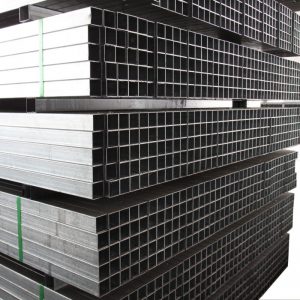How to make the proper type of surface treatment for your steel pipe
For steel pipe manufacturers, steel pipe surface treatment is one of the key factors determine the service life of the pipeline in actual uses. As a rule, from the moment the metal pipe is manufactured, it tends to be protected from the possible deleterious effects of the environment in certain applications in future. This protection can be the introduction of certain elements into the base metal pipe, creating a corrosion resistant alloy, or the addition of a surface coating of a chemical conversion coating, metal or paint.

In the modern times, structural steel pipes are widely used as the regular building materials in the construction industry, it seems necessary for you to have a great knowledge of certain methods of surface treatment for steel pipe in the future construction project. Technically, paint is the most commonly used material to protect welded steel pipe in a mill. Paint systems for steel structures have developed over the years to comply with industrial environmental legislation and in response to demands from bridge and building owners for improved durability performance. For cold rolled steel pipes, the protective paint systems usually consist of primer, undercoat(s) and finish coats. Each coating ‘layer’ in any protective system has a specific function, and the different types are applied in a particular sequence of primer followed by intermediate / build coats in the shop, and finally the finish or top coat either in the shop or on site. Today, much progress has been made in the practice of using coating technology to offer corrosion protection to offshore structures, inner-hull tanks in fuel tankers, ship hull, underwater pipes, etc.
Hot dipped galvanized steel pipe generally has the rational cost effective in the market. When hot dipped galvanized steel pipe needs importing, this type of pipe usually has a passivator film that protects the metal from corrosion in the salt-water environment as the metal travels across seas or oceans on cargo ships. Today, much progress has been made in the practice of using coating technology to offer corrosion protection to offshore structures, inner-hull tanks in fuel tankers, ship hull, underwater pipes, etc. New methods have been developed to repair and protect concrete and steel structures in coastal and offshore waters, such as the all-polymer encapsulation technique to repair and protect structures in the splash zone. Long-term structural or mechanical requirements for a particular application can be assured through corrosion protection, through either coatings or a combination of cathodic protection and coatings.
Tel: +86 18202256900 Email: steel@tjdpbd.com









